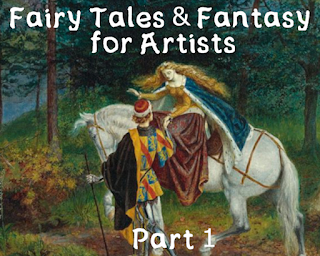Article by Ty Hulse
The Lost
The world is filled with desperate people, but this was even more true in ancient times when women were forced to marry men who often didn't love them in distant villages where they were treated as outsiders by every human around them. Men too, could find themselves leaving home because there wasn't enough food in the village to feed them, then unable to find work they found themselves starving to death, looked down on by everyone around them.
In lore some of these people were lucky, they found a fairy who was willing to help, but not all fairies are helpful. Seeing an opportunity to pump up their ego, to take advantage of a lonely and desperate person many of the less kind fairies would attach themselves to the lost. They would give the lost magical secrets and aid in return for their complete emotional, physical, and often sexual subservience.
The fairies attached to The Lost were aggressive, controlling, and fickle. Acting like an abusive husband they would beat and torment the witch to get their way. The Lost couldn't leave even if they wanted to, for they were trapped in a supernatural relationship, however, they seem to have started to justify their relationship with the fairy, and become proud of it. The Lost had so little control over everything that they reveled in the magical powers they gained, but like children they often bragged about things they shouldn't have. They used their powers to threaten and blackmail the people around them, often trying to gain control over something. Thus many of these witches were found out because they would publicly yell at people that they would curse them to die, or because they would use their powers of divination to find out a powerful persons dark secrets.
Things would get progressively worse for The Lost, until at last the fairy bored of them and left. Grief stricken and relieved The Lost might swear that never again would they find themselves in such a situation, but there were are always more fairies looking to boost their ego through a relationship with a human. And in the end The Lost desires the feeling of power that comes from magic, even if it requires the abuse of something cruel.
Lucky Adventurous Tricksters
Examples: Hermes, "Jack and the Bean Stalk," hero in "Devil and the Three Golden Hairs," Hero in "The Drummer," and many, many more.
Perhaps the most common witch in fairy tales, the Luck Born are some of the most liminal of witches, for in fairy tales the pop in and out of the spirit realm with such ease, and gain spirit allies so readily that people hearing the story often don't even realize they are using magic.
Free loving and free wheeling they are quick to accept any task placed in front of them, and quick to befriend or trick any spirit at will. The hero of "The Drummer," for, pretends to be leading an army in order to force a giant into carrying him to the glass mountain (the other world).
Lucky Born are willing to work hard to accomplish their tasks, but at the same time, they are also willing to just lay down when a task is impossible and assume it will resolve itself, because for them it almost always does with the help of kind fairies. Fairies have always helped them, and always well, because the fairies like the kind free wheeling nature of the Luck Born.
Again going back to The Drummer, he's the only protagonist I know of who ever returned the shift of a fairy when he got a hold of it. Most stories of swan maidens, sky women, sealkie, etc, involve someone stealing these to gain power over the fairy. The Drummer, returned it immediately once he learned it belonged to someone. Then he risked his life to rescue the fairy whom it belonged to, despite knowing very little about her.
The one serious flaw with Luck Born is that since they think everything will always turn out, that the beans are magical, that if they just lay down some fairy will come along and do their work for them, etc. And they love to be helpful, they are quick to give advice, which won't work out very well for anyone else.



















